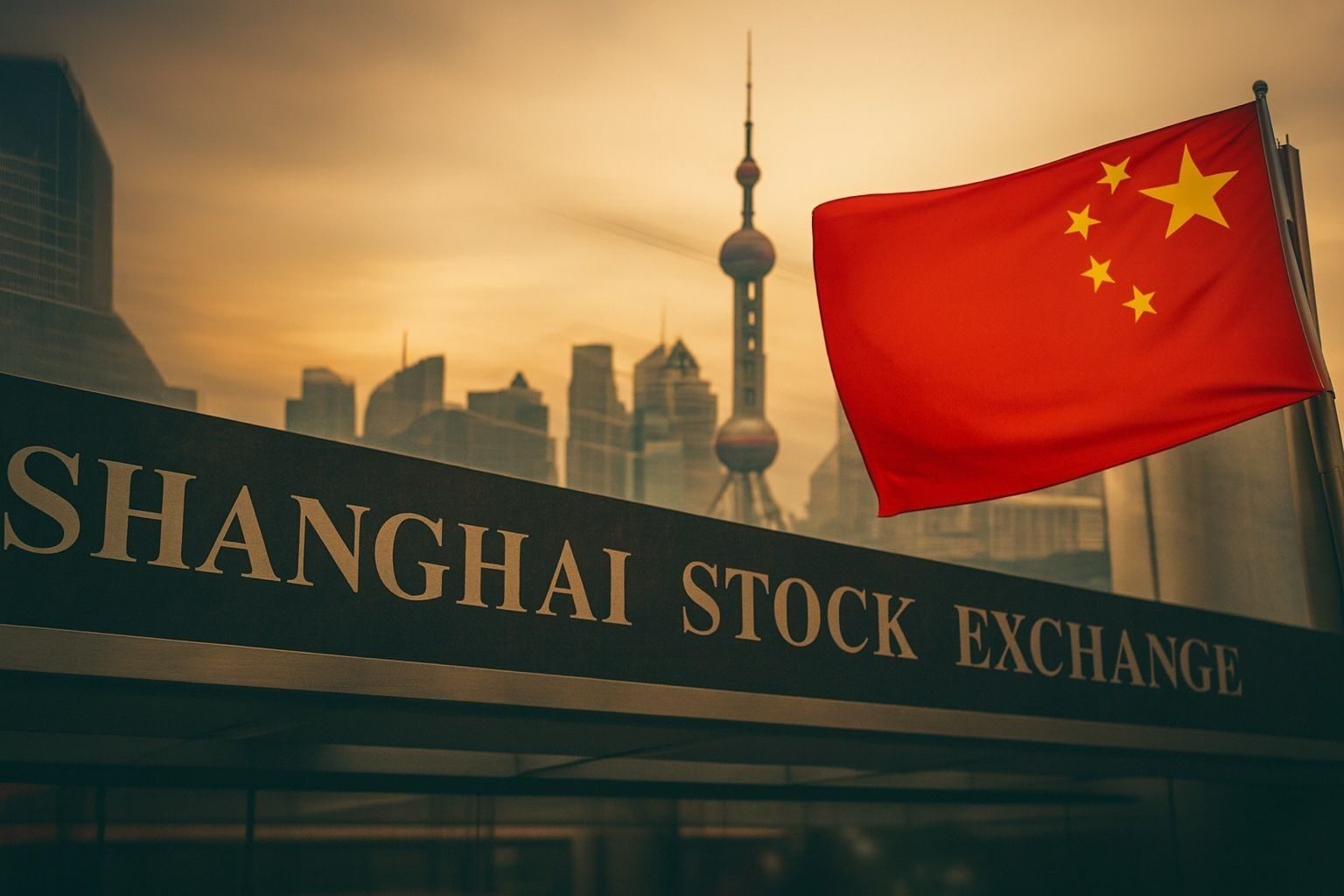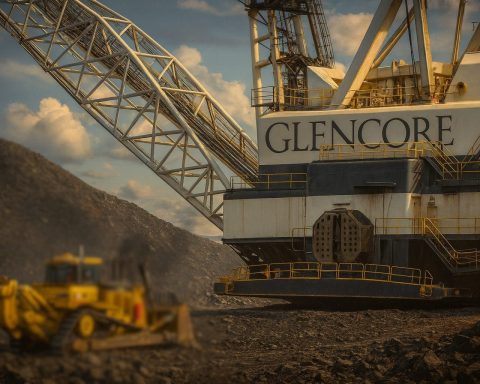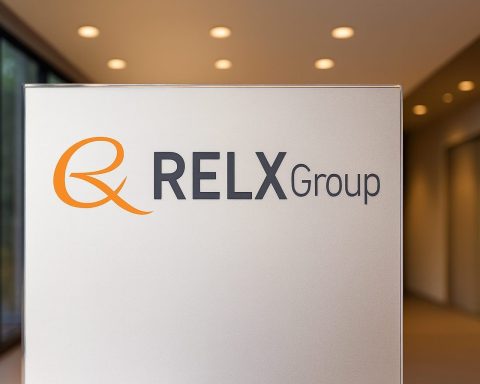BEIJING / HONG KONG – November 27, 2025. China’s stock markets ended Thursday mixed, with modest gains in benchmark indices masking sharp losses in property developers after China Vanke moved to delay an onshore bond repayment. A softer yuan fixing, weaker industrial profit data and fresh tech-sector worries around Nvidia chips and ByteDance added to a cautious tone, even as global risk sentiment improved on expectations of a U.S. Federal Reserve rate cut next month.
Key Market Moves: Mainland China and Hong Kong
Mainland benchmarks posted only small changes, but the headline numbers hide some hefty sector rotations.
- The Shanghai Composite Index rose around 0.3% to 3,875.26 points, extending a recent recovery and outperforming many regional peers. [1]
- The CSI 300 Index, which tracks large-cap A-shares in Shanghai and Shenzhen, dipped 0.05% to 4,515.40, as gains in banks and energy were offset by heavy selling in real estate and some growth names. [2]
- In Hong Kong, the Hang Seng Index closed 0.07% higher at 25,945.93, while the Hang Seng China Enterprises Index inched up 0.03% to 9,164.87. The Hang Seng Tech Index slipped 0.36% to 5,598.05, reflecting pressure on Chinese internet and tech hardware shares. [3]
Defensive pockets outperformed. A-shares in banks, insurers and energy companies gained between roughly 0.3% and 1%, cushioning the benchmarks from a sharp slide in developers. [4]
Hong Kong and mainland moves came against a backdrop of firmer Asian markets more broadly, with regional indices tracking Wall Street’s recent winning streak as investors increasingly price in a December Fed rate cut. [5]
Vanke at the Center of a New Property-Sector Shock
The day’s biggest story for Chinese equities was China Vanke, long viewed as one of the strongest private-sector developers.
Late on Wednesday, Vanke said it would seek bondholder approval to delay repayment of a 2 billion yuan (about US$283 million) onshore bond due December 15, marking its first public request to extend an onshore bond. [6]
That move rattled confidence that state-backed names are insulated from the crisis:
- Vanke’s onshore shares in Shenzhen fell more than 7–8% at one point, hitting their lowest levels since 2008. [7]
- Its dollar bonds tumbled to distressed levels, with some issues reportedly trading around 35–40 cents on the dollar, according to market reports. [8]
- The CSI 300 real estate sub-index slid as much as 4.5% intraday before closing down around 2.4%, reaching its lowest level since September 2024. [9]
For a developer once seen as a bellwether with solid state-linked backing via Shenzhen Metro, the bond extension request is a clear signal that even politically connected groups are no longer guaranteed painless support. Vanke has already reported a 28.2 billion yuan net loss in the first nine months of 2025, with property sales down about 43% year-on-year. [10]
Investors worry that if Vanke needs to push out payments, a broader wave of restructurings or “voluntary” extensions could spread through the still-fragile property sector, just as authorities try to stabilize housing and local-government finances.
Property Selloff vs. Defensive Rotation
The Vanke shock triggered broad selling in property names across both mainland and Hong Kong:
- Mainland and Hong Kong property indices declined, with Hong Kong’s Hang Seng Mainland Properties Index closing down about 0.7% after deeper intraday losses. [11]
- Other developers, including Sunac China Holdings and China Overseas, fell over 1% in Hong Kong trade, while A-share peers also dropped. [12]
At the same time, investors rotated into defensive sectors:
- The CSI Energy Index gained around 1%, supported by oil & gas and coal names. [13]
- The CSI Banks Index rose roughly 0.5%, and insurers also edged higher, as markets bet that large financials may benefit from any future easing and remain less exposed to property developers’ balance sheets. [14]
Analysts cited by local brokerages argued that volatility is likely to remain elevated into year-end, with many investors unwilling to add risk until there is clearer policy direction on property support and local-government financing. [15]
Tech, AI and the Nvidia–ByteDance Story
Chinese tech shares had to digest another negative headline on the AI chips front.
Multiple reports citing sources at ByteDance said Chinese regulators have barred the TikTok owner from using Nvidia chips in new data centers, part of a broader push to reduce reliance on U.S.-made AI processors and accelerate the adoption of domestic alternatives. [16]
ByteDance was reportedly Nvidia’s largest customer in China in 2025, so the decision is seen as both:
- A strategic move in Beijing’s long-running tech sovereignty drive, and
- A short-term negative for Chinese AI and cloud ecosystems built around imported U.S. hardware. [17]
That backdrop weighed on Hong Kong–listed tech heavyweights:
- The Hang Seng Tech Index slipped, with names such as Alibaba, Baidu and BYD under pressure, according to intraday trading reports. [18]
- Onshore AI-related stocks gave back earlier gains after initially rallying on themes such as domestic chip substitution. [19]
One standout gainer was Pop Mart, the toy and collectibles company, whose Hong Kong-listed shares jumped around 6–7% after Beijing unveiled a new consumption-boosting plan that explicitly mentions upgrades in pet and toy spending, among other categories. [20]
Macro Data: Industrial Profits Turn Down Again
Beyond corporate headlines, fresh macro data reminded investors that China’s real economy remains fragile.
Official figures showed industrial profits fell 5.5% year-on-year in October, snapping a two-month stretch of strong double-digit growth. That contrasts with a 21.6% jump in September and a 20.4% rise in August, and drags year-to-date profit growth down to 1.9%, from 3.2% through September. [21]
Key takeaways from the profit data:
- Weak domestic demand and an export downturn were cited as major drags.
- Mining and heavy industry saw some of the steepest declines.
- State-owned enterprises delivered near-flat profit growth, while private and foreign firms showed only modest gains. [22]
The numbers reinforce the view that, although China has avoided a sharp post-pandemic slump, growth remains uneven and heavily policy-dependent, with persistent pressure in manufacturing, exports and construction.
Currency Watch: PBOC Tweaks the Yuan Fix
The People’s Bank of China (PBOC) added another layer of nuance to the day’s market narrative.
Ahead of Thursday’s session, the central bank set the daily yuan midpoint at 7.0779 per U.S. dollar, its strongest level since October 14, 2024 – but slightly weaker than market expectations for the first time since July. [23]
- The fix was about 46 pips weaker than a Reuters model estimate, a notable shift after months of consistently stronger-than-expected fixings designed to support the currency. [24]
- The onshore yuan traded near 7.08 per dollar, while the offshore yuan hovered just below that level during the session. [25]
Traders interpreted the move as an effort to cool the pace of yuan appreciation, preserving export competitiveness without signaling any major policy reversal.
For equities, a somewhat softer but stable yuan is a mixed blessing: it can help exporters and manufacturers, but too much weakness risks renewed capital outflow worries and higher risk premiums for foreign investors.
Global Backdrop: Fed Cut Bets Support Risk Appetite
Chinese markets also traded in the slipstream of global macro developments.
- Wall Street has extended a multi-session rally, with the S&P 500 and Nasdaq both advancing on Wednesday before the U.S. Thanksgiving holiday. [26]
- Futures markets now price an 80–85% probability of a Fed rate cut in December, up sharply from about 30% just a week ago, according to CME FedWatch–based estimates cited in global market reports. [27]
- Asian indices across Japan, South Korea, Taiwan and Australia mostly traded higher on Thursday, taking their lead from the U.S. and a softer dollar. [28]
For China, the prospect of Fed easing matters because it could give the PBOC more room to cut domestic rates without putting too much downward pressure on the yuan. Analysts note that if the Fed continues to ease into 2026, Beijing may shift gradually toward more aggressive monetary support for its own deflation and growth challenges. [29]
Foreign Flows, Indices and Strategist Views
Two additional pieces of context shaped how global investors looked at China today:
- MSCI Index Rebalance Afterglow
Earlier this week, index provider MSCI implemented its November 2025 index review, rebalancing the MSCI China Index, MSCI China A Onshore Index and related benchmarks as of the close on November 24. [30]- The rebalance drove elevated turnover in Hong Kong and Shanghai at the start of the week and may still be impacting flows as passive funds adjust their positions. [31]
- JPMorgan Turns More Constructive on China
A widely circulated research note from JPMorgan reiterated a positive view on the MSCI China and CSI 300 indices into 2026, highlighting four medium-term investment themes: [32]- “Anti-involution” policies (measures aimed at cutting hyper-competition and improving corporate profitability),
- Strong global AI infrastructure capex, supporting China’s local AI ecosystem despite U.S. export controls,
- Supportive global monetary conditions as developed markets ease policy, and
- A K-shaped consumption recovery, where high-end spending (luxury, premium food & beverage) outperforms mid-tier categories.
Those calls contrast with the day’s nervous trading tone, underlining the growing gap between long-term constructive research views and short-term risk aversion, especially around property and regulatory headlines.
What Today’s Session Means for Investors
Today’s action in China’s stock market can be boiled down to a handful of key themes:
- Fragile Stabilization at the Index Level
Headline benchmarks like the Shanghai Composite, CSI 300 and Hang Seng Index held up reasonably well, helped by defensives and selective consumer names, even as property stocks slumped. That suggests many investors still see value in China but are picking sectors carefully. [34] - Property Crisis Still a Live Risk
The Vanke bond extension request is a stark reminder that China’s property downturn is not yet fully resolved. The sector remains a key swing factor for both the economy and market sentiment, with any sign of default or restructuring quickly spilling into broader credit and equity markets. [35] - Tech Caught Between Localization and Regulation
The ByteDance–Nvidia episode shows that AI and internet names face a complex mix of export controls and domestic regulatory steering. While localization could ultimately benefit Chinese chipmakers and cloud providers, the transition period is likely to be bumpy for listed tech stocks. [36] - Macro and FX Signals Point to More Policy Fine-Tuning
Weak industrial profits and a carefully calibrated yuan fix hint at ongoing policy juggling: Beijing is trying to support growth without triggering capital outflows or another speculative property bubble. Markets are now watching for hints of additional fiscal measures or targeted monetary easing. [37] - Global Rate Cycle Could Become a Tailwind
If the Fed delivers the anticipated December cut and signals more easing into 2026, the global liquidity backdrop for Chinese assets could improve, potentially reinforcing the more optimistic forecasts from houses like JPMorgan – provided domestic risks, especially in property, are contained. [38]
For now, the China stock market on November 27, 2025 looks like a market in transition: finding support from global risk-on sentiment and selective policy tailwinds, but still wrestling with a deep property shake-out, regulatory cross-currents in tech, and uneven domestic demand.
References
1. halifax.citynews.ca, 2. www.investing.com, 3. english.news.cn, 4. www.tradingview.com, 5. halifax.citynews.ca, 6. www.reuters.com, 7. www.tradingview.com, 8. www.ft.com, 9. www.tradingview.com, 10. www.ft.com, 11. www.tradingview.com, 12. m.uk.investing.com, 13. www.tradingview.com, 14. www.tradingview.com, 15. www.tradingview.com, 16. www.reuters.com, 17. www.reuters.com, 18. m.uk.investing.com, 19. www.tradingview.com, 20. www.tradingview.com, 21. www.reuters.com, 22. www.reuters.com, 23. www.brecorder.com, 24. www.brecorder.com, 25. www.brecorder.com, 26. halifax.citynews.ca, 27. www.reuters.com, 28. halifax.citynews.ca, 29. asiatimes.com, 30. www.webull.com, 31. www.forbes.com, 32. www.aastocks.com, 33. www.aastocks.com, 34. www.tradingview.com, 35. www.reuters.com, 36. www.reuters.com, 37. www.reuters.com, 38. www.reuters.com










